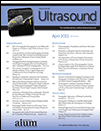Limitations of Standard Echocardiographic Methods for Quantification of Right Ventricular Size and Function in Children and Young Adults
Abstract
Objectives
The aim of this study was to evaluate correlation of 2-dimensional (2D) echocardiographic assessment of right ventricular (RV) and left ventricular (LV) size and function with magnetic resonance imaging (MRI) in children and young adults.
Methods
Patients with repaired tetralogy of Fallot (n = 23) and those who had normal RV volumes (n = 13) and a normal ejection fraction (EF) by MRI constituted the study groups. Echocardiographic indices including the end-diastolic area (EDa), end-systolic area (ESa), fractional area change (FAC), tricuspid annular motion (TAM), RV basal diameter, and RV basal shortening fraction were compared with MRI ventricular volumes and the EF. Two echocardiographers qualitatively graded RV size and function.
Results
In both groups, neither the RV EDa nor the ESa correlated with MRI RV volumes. Only TAM correlated with the RV EF. Qualitative assessment of the RV showed poor interobserver agreement. The LV area and FAC correlated well with MRI data.
Conclusions
In contrast to the LV, 2D echocardiographic indices of RV size and function, with the exception of TAM, do not correlate with MRI data.




